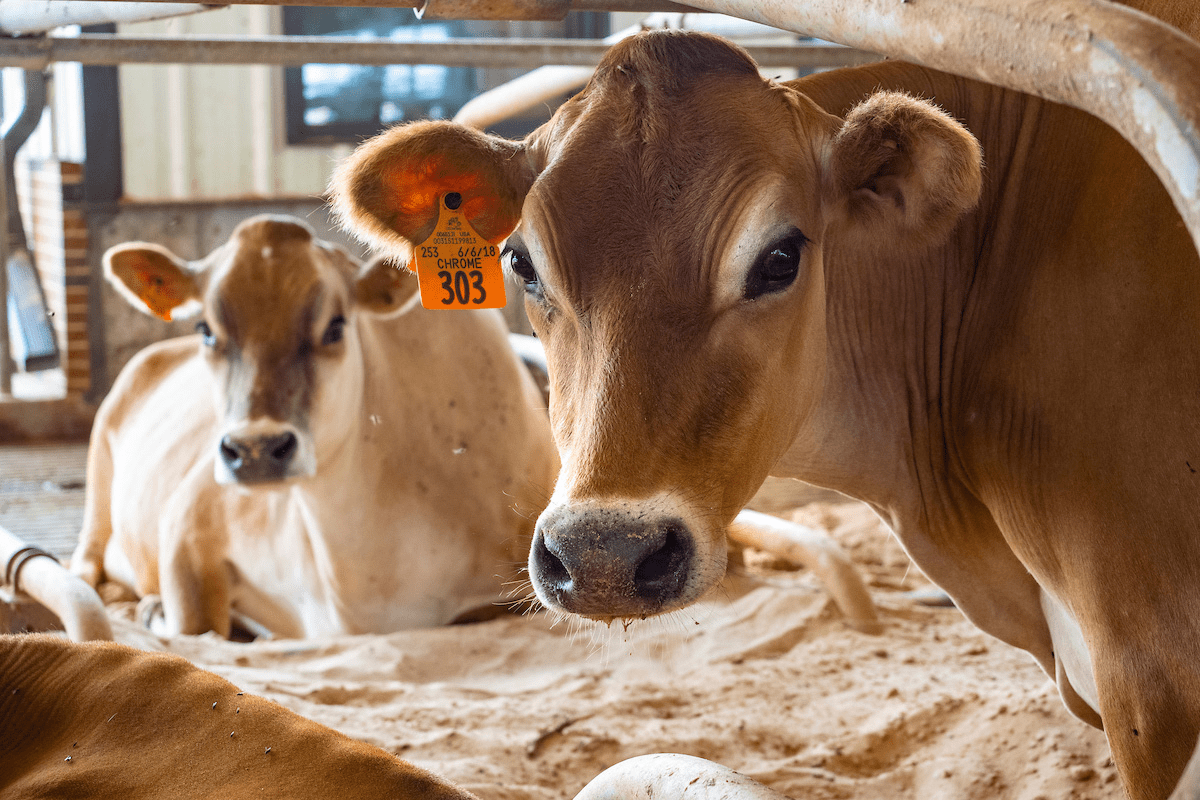Each group of animals exhibits characteristic features that make them stand out or easily identifiable. These characteristics are usually inherited and hence could be said to be genetically determined.
Therefore, a breed is defined as a group of animals that are related by the same ancestor and have the same characteristics such as appearance, conformation, size, and other notable and distinguishing features. It is a population of animals distinguishable from others by some genetically determined characteristic features which are very conspicuous.
Types of Cattle
Cattle belong to the family Bovidae which is sub-divided into two sub-groups: Bos Taurus and Bos Indiscus. Bos Taurus cattle have no hump i.e. do not possess hump while Bos indicus possesses humps. In addition, Bos Taurus cattle are the types of cattle found in the temperate regions of the world while Bos Indicus are found mostly in the tropics.
Examples of Bos Taurus cattle include breeds like the Holstein/ Friesian, Ayrshire, Jersey, Hereford, Kuri, Ndama, Muturu, and so many others while Bos Indicus are breeds like the White Fulani, Sokoto Gudali, Red Bororo, Keteku, Wadara (Shua Arab).
Cattle can also be typed or classified based on the main purpose of production. Those specifically bred for milk production are called dairy cattle (e.g. Holstein/Friesian) while those for meat are called beef cattle (e.g. Hereford).
Some cattle have dual or even triple-purpose functions. They can be used for dairy, and beef production and also used for draught. Examples include most of the local breeds in Africa e.g. White Fulani, Sokoto Gudali, etc.
Read Also Housing in Cattle Production
Breeds of Cattle
Some of the breeds of cattle have been named above. However, we shall only study those that are found in our environment which we will generally call local breeds, and one or two of those not found in our tropical climate which we shall call exotic breeds.
1. White Fulani or Bunaji
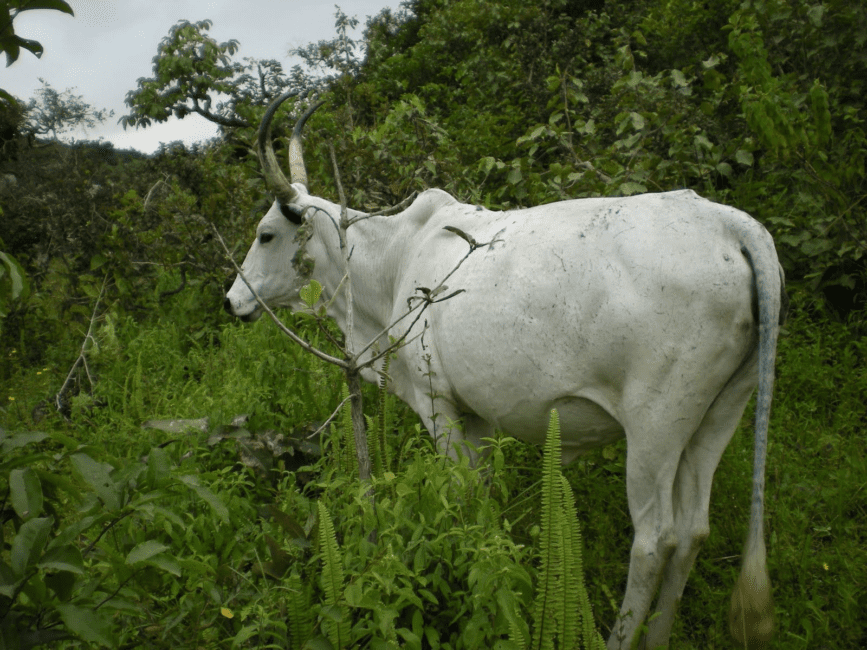
This breed of cattle is the most prevalent in Nigeria, especially in the Guinea and savannah zones of the country. They are large animals with medium to long up-curving horns. They have a white colored coat. The animal has a well-developed hump with skin folds.
At maturity, the female White Fulani or Bunaji cattle weighs 330 to 350 kg while the male or bull weighs about 500 kg. It is a dual or triple-purpose type of cattle as it may be fattened for beef, kept for milk production, or used as a draught animal, especially the bull.
2. Sokoto Gudali
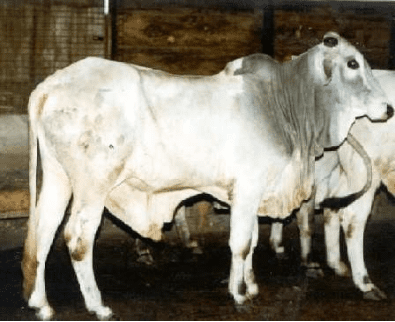
This is a humped breed of cattle. It is polled (no horn) with medium thick, loose, and pigmented skin having a whitish creamy color in females while the male has dim with bluish grey shadings. The animal has pendulous ears with short horns that are a bit longer in the female.
The udders in the female are well developed with good teats hence they are regarded as an indigenous dairy breed. At maturity, the female weighs an average of about 330 kg while the male weighs about 450 kg. The female produces an average of 1,500 kg of milk per lactation.
Read Also The Reproductive Rate of Cattle
3. Ndama
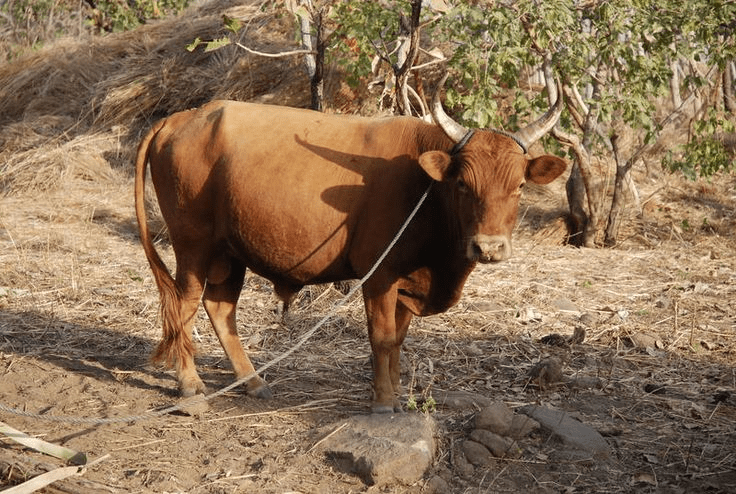
This is a breed that is native to the West African Coasts, especially Sierra Leone, Congo, and Guinea, or the FoutaDjallon area. The females weigh about 200 kg while the males weigh up to 300 kg. They do not possess hump. They are compact animals with short horns and light brown skin coloration. They are highly tolerant to trypanosomiasis. They are a poor producer of milk.
4. Holstein/Friesian
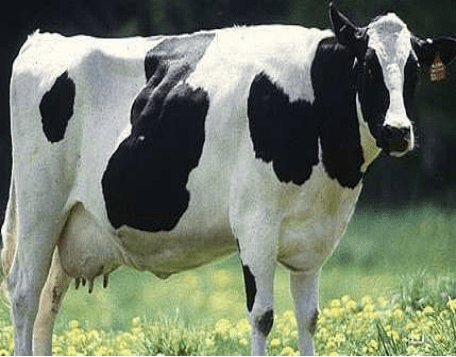
This is one of the breeds that originated from the Netherlands. It is an exotic breed. It has black coloration with white patches on the coats. The udders are well-developed and very large. Friesians are good producers of milk and are mostly used for dairy purposes either as pure or cross-breeds in Nigeria and most African countries.
In summary, the physical characteristics or purpose for which cattle are bred or reared have been used to classify cattle either as humped or those that do not possess humps, dairy or beef, and/or draught. The peculiarities or uniqueness of each breed of cattle for easy identification were also highlighted.
Read Also Climate Change on Land Resources (Agriculture Production)

